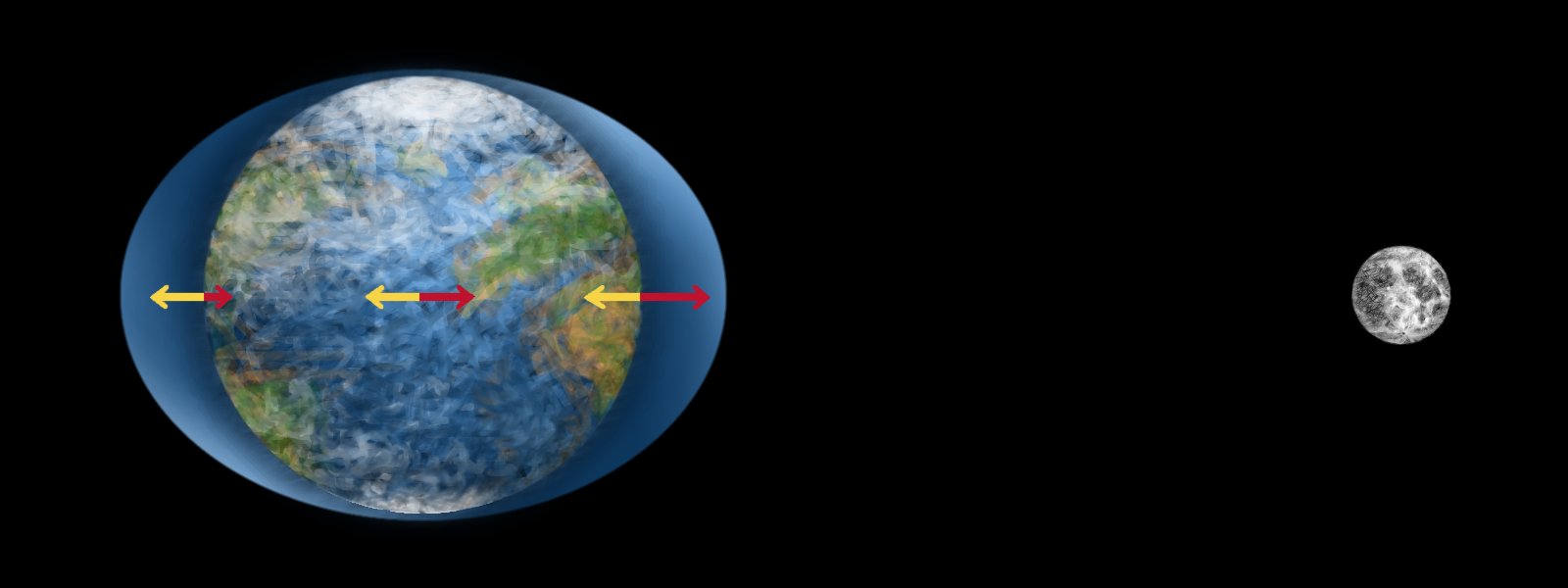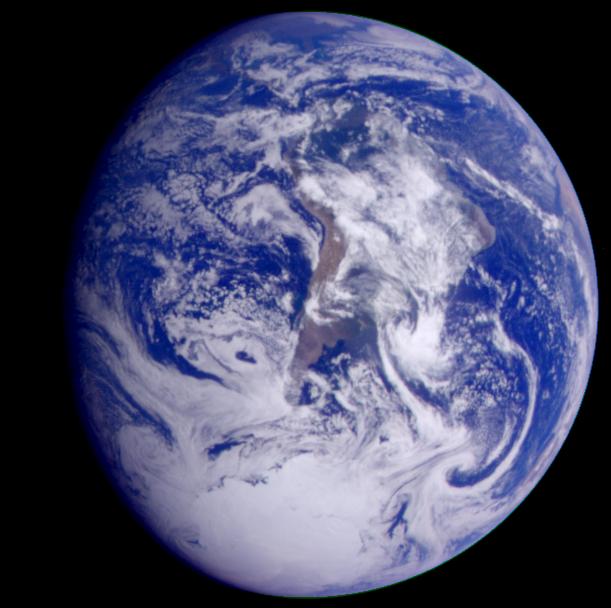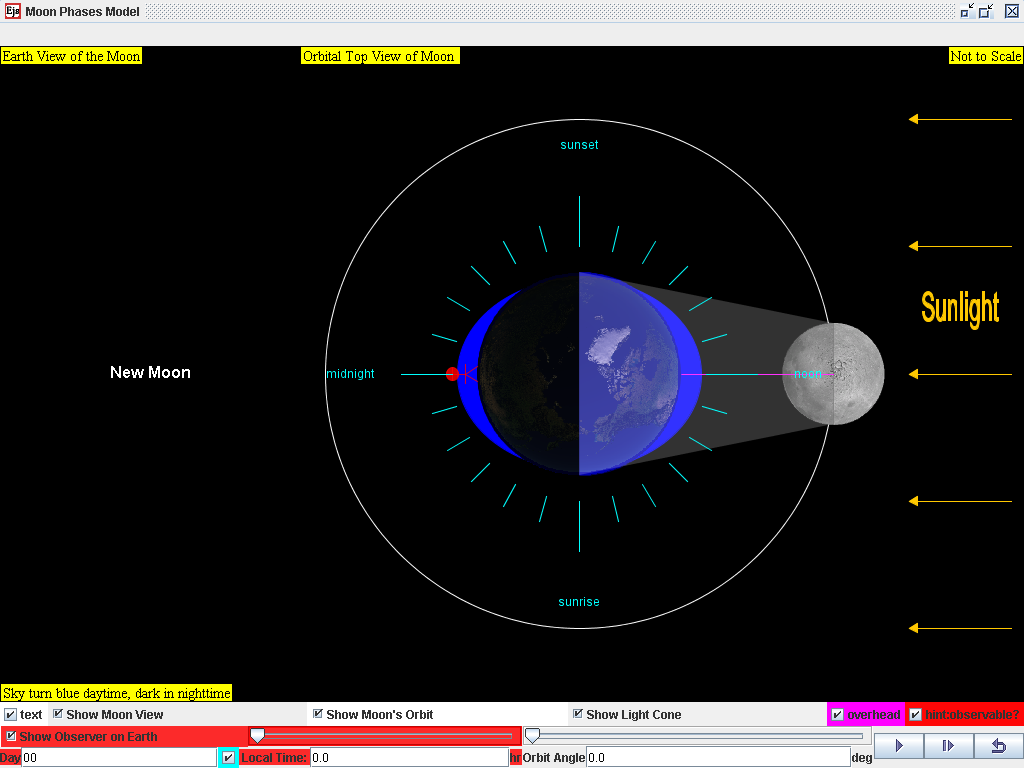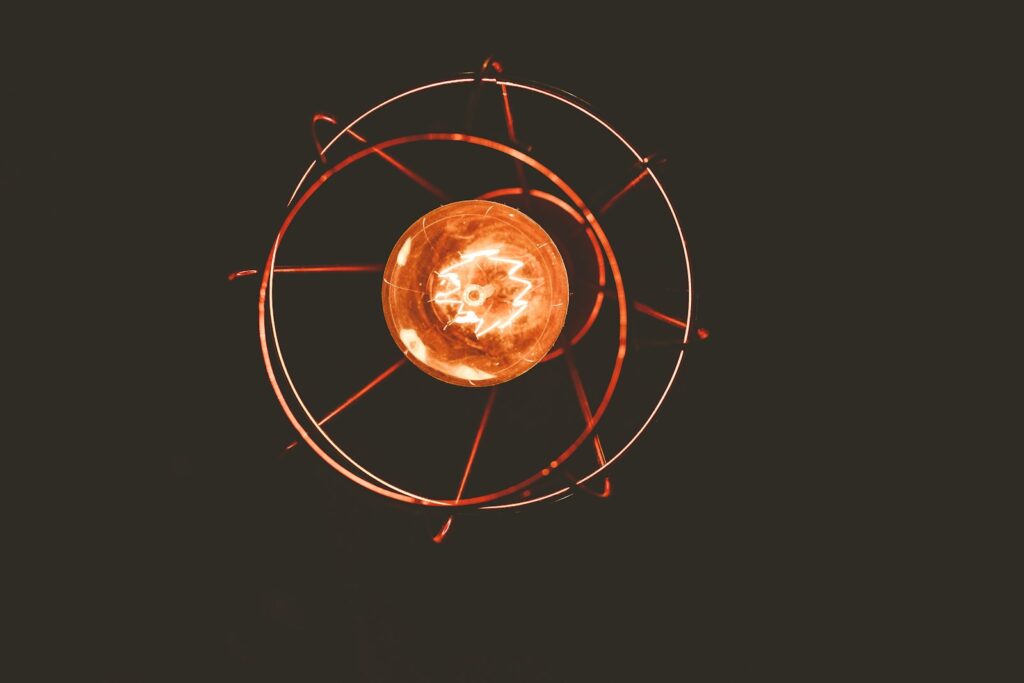Picture this: you wake up, rush through your morning routine, and by the time you’ve had lunch, the sun is already setting. This isn’t some bizarre dream or a trip to the Arctic Circle during winter solstice. This was reality for our planet billions of years ago, when Earth spun so fast that a complete day lasted just 18 hours. The very ground beneath your feet has witnessed this cosmic dance of time, spinning faster than a figure skater pulling in their arms.
The Moon’s Gravitational Pull Slows Everything Down

The Moon acts like a cosmic brake pedal, gradually slowing Earth’s rotation through tidal forces. Every time ocean waters bulge toward the Moon, they create friction against the seafloor, stealing tiny amounts of rotational energy from our planet. This process has been happening for over 4 billion years, steadily stretching our days from those ancient 18-hour cycles to the familiar 24 hours we know today.
Think of it like dragging your hand through water while swimming – the resistance slows you down. The Moon’s gravity creates this same effect on a planetary scale, pulling at Earth’s oceans and creating the tidal bulges that act as natural brakes. Scientists estimate that Earth loses about 1.7 milliseconds of rotation every century due to this lunar influence.
Ancient Coral Reefs Tell Time’s Hidden Story
Fossil corals from 400 million years ago reveal nature’s own timekeeping secrets through their growth patterns. These ancient marine creatures added daily growth rings, just like trees add annual rings, creating a natural calendar preserved in stone. By counting these microscopic bands, paleontologists discovered that ancient years contained roughly 400 days instead of our current 365.
The math is fascinating: if ancient years had 400 days, and we know Earth’s orbital period around the Sun hasn’t changed significantly, then each day must have been shorter. These coral archives suggest days lasted about 22 hours around 400 million years ago, providing concrete evidence of our planet’s changing rotation. It’s like finding an ancient clock that still ticks with prehistoric time.
The Early Earth Spun Like a Cosmic Top

In Earth’s infancy, roughly 4.5 billion years ago, our planet resembled a spinning top gone wild. The day lasted only 6 hours, making our 18-hour estimate seem leisurely by comparison. This breakneck rotation resulted from the violent collision that formed the Moon, which also tilted Earth’s axis and set it spinning faster than ever before.
Imagine experiencing sunrise and sunset four times in what we now consider a single day. The rapid rotation created extreme weather patterns, with hurricane-force winds constantly circling the globe. This wasn’t a world where complex life could flourish – it was a planet still cooling from its molten birth, spinning through space like a cosmic carnival ride.
Tidal Forces Shape More Than Just Oceans

While we often think of tides affecting only seawater, the Moon’s gravitational pull actually stretches the entire planet. Earth’s solid rock surface rises and falls by about 16 inches twice daily, creating what scientists call “earth tides.” This constant flexing of our planet’s crust generates heat through friction, contributing to the gradual slowing of Earth’s rotation.
The atmosphere itself experiences tidal effects, with air pressure fluctuating in predictable patterns as the Moon passes overhead. Even the human body, being roughly 60% water, experiences these gravitational forces, though the effects are far too subtle for us to notice. It’s remarkable to think that lunar gravity touches every aspect of our planet’s behavior, from the deepest ocean trenches to the highest mountain peaks.
Ancient Stromatolites Hold Clues to Prehistoric Days

Stromatolites, those strange layered rock formations created by ancient bacteria, serve as Earth’s oldest timekeepers. These bacterial mats grew in daily cycles, responding to the rhythm of day and night by forming distinct layers. The thickness and spacing of these layers provide scientists with direct evidence of how long days lasted billions of years ago.
Some stromatolites from 3.5 billion years ago suggest days lasted only 12-15 hours, supporting the theory that Earth’s rotation has been steadily slowing throughout its history. These bacterial communities unknowingly created geological calendars, recording the passage of time in stone layers thinner than human hair. Each stromatolite is essentially a fossilized record of ancient sunrises and sunsets.
The Great Oxidation Event and Changing Time

Around 2.4 billion years ago, cyanobacteria began pumping oxygen into Earth’s atmosphere, fundamentally changing our planet’s chemistry. This Great Oxidation Event coincided with a period when days were approximately 18 hours long, creating unique conditions for life’s evolution. The shorter days meant more frequent temperature cycles, which may have influenced how early organisms adapted to their environment.
The increased oxygen levels also affected atmospheric density, subtly influencing how tidal forces interacted with Earth’s rotation. While the primary driver of day-length changes remained the Moon’s gravitational pull, atmospheric composition played a supporting role in this cosmic choreography. This period represents a crucial turning point when Earth’s biological and physical systems began evolving together in complex ways.
Seasonal Patterns in a Faster-Spinning World

With 18-hour days, Earth’s seasons would have felt dramatically different from today’s experience. The rapid day-night cycle meant temperature swings happened more frequently, creating a world where thermal equilibrium was constantly shifting. Plants and early organisms had to adapt to this accelerated rhythm of light and darkness, developing different survival strategies than modern life forms.
The faster rotation also amplified the Coriolis effect, making weather patterns more intense and unpredictable. Storm systems would have spun up and dissipated more rapidly, while ocean currents flowed in patterns unlike anything we see today. It’s fascinating to imagine how different Earth’s climate would have been with this altered temporal framework governing all natural processes.
Eclipse Patterns Were Wildly Different
Solar eclipses in the era of 18-hour days would have followed completely different patterns than today’s celestial events. The Moon appeared larger in the sky because it orbited much closer to Earth, creating more frequent and longer-lasting eclipses. These dramatic shadow shows would have occurred several times per year, rather than the rare events we experience today.
The psychological impact on any hypothetical observers would have been profound. Imagine living in a world where the Sun disappeared behind the Moon every few months, casting the land into temporary darkness multiple times annually. These frequent eclipses would have created a very different relationship between Earth and its celestial neighbors, making the night sky feel more dynamic and ever-changing.
How Continental Drift Responded to Faster Rotation
The faster rotation of ancient Earth created stronger centrifugal forces that influenced how continents moved across the planet’s surface. Landmasses experienced greater stress from the rapid spinning, potentially accelerating the process of continental drift in certain directions. The equatorial bulge was more pronounced, creating additional geological pressures that shaped mountain formation and ocean basin development.
Volcanic activity patterns were also affected by the increased rotational forces. Magma chambers experienced different pressure dynamics, while tectonic plate movements followed paths influenced by the stronger Coriolis effects. It’s like trying to build a sandcastle on a merry-go-round – the faster it spins, the more challenging it becomes to maintain stable structures.
The Evolution of Life’s Internal Clocks

Living organisms developed circadian rhythms that matched Earth’s 18-hour day cycle, creating internal biological clocks perfectly synchronized with their environment. These ancient timepieces had to be incredibly flexible as days gradually lengthened over millions of years. Some researchers believe traces of these old rhythms still exist in modern organisms, hidden deep within our genetic code.
The transition from 18-hour to 24-hour days required countless species to gradually adjust their internal timing mechanisms. This evolutionary pressure may have contributed to the development of more sophisticated biological clocks, as organisms that could adapt to changing day lengths gained survival advantages. It’s remarkable to think that our modern sleep-wake cycles carry echoes of these ancient temporal adaptations.
Predicting Earth’s Future Day Length

Scientists predict that Earth’s days will continue growing longer, eventually reaching 25 hours in about 200 million years. This gradual change means future humans (or whatever species inherits the planet) will experience slightly longer days than we do today. The Moon will continue its slow drift away from Earth, weakening the tidal forces that currently govern our planet’s rotation.
Eventually, Earth and the Moon will become tidally locked, with the same side of our planet always facing the Moon. When this happens, Earth days will last about 47 current days, creating a world where one side experiences eternal sunshine while the other remains in perpetual darkness. This represents the ultimate endpoint of the cosmic dance that began with those frantic 6-hour days of Earth’s youth.
Modern Technology Measures Ancient Time
Advanced laser systems now bounce light off the Moon to measure its distance with incredible precision, tracking how it moves away from Earth at about 1.5 inches per year. This technology allows scientists to calculate exactly how day length has changed throughout Earth’s history. Atomic clocks precise enough to detect tiny variations in Earth’s rotation help us understand these ancient temporal mysteries.
Satellite data combined with geological evidence creates a comprehensive picture of how our planet’s rotation has evolved over billions of years. Computer models can now simulate what Earth’s climate and weather patterns would have looked like during those 18-hour days, giving us unprecedented insights into our planet’s temporal evolution. These tools transform ancient rocks and fossilized organisms into time machines that reveal Earth’s hidden history.
The Dance Between Earth and Moon Continues

Every sunrise and sunset represents one tick of a cosmic clock that has been running for over 4 billion years. The Moon’s gentle tug on our oceans continues its ancient work, gradually stealing rotational energy from Earth and adding it to the lunar orbit. This celestial partnership has shaped not just the length of our days, but the evolution of life itself on our planet.
Understanding Earth’s changing rotation reminds us that nothing in the cosmos remains static – even time itself evolves on geological scales. The next time you complain about not having enough hours in the day, remember that our ancient planet once managed to pack all of life’s essential processes into just 18 hours. What seems like plenty of time to us would have felt like an eternity to the organisms that first experienced Earth’s gradually lengthening days.
The story of Earth’s changing day length connects us to the deepest rhythms of our planet’s history, revealing how celestial mechanics and biological evolution dance together across billions of years. When you watch the Moon rise tonight, you’re witnessing the same gravitational force that has been steadily stretching our days since the dawn of time. Isn’t it amazing how something as simple as the length of a day can hold such profound secrets about our planet’s past and future?



